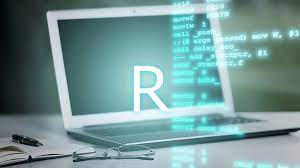About this course
Introduction:
It's a popular language for data analysis: R has become one of the most popular programming languages for data analysis, with a large and active community of users and developers. Many organizations, including major tech companies and government agencies, use R for data analysis and modeling.It's free and open source: R is an open source language, which means that anyone can download and use it for free. This makes it accessible to anyone who wants to learn data analysis, regardless of their financial resources.It has a wide range of statistical and data analysis packages: R has a vast collection of libraries and packages that are specifically designed for statistical computing and data analysis. These packages allow you to perform a wide range of data analysis tasks, including data manipulation, visualization, and modeling. It's a flexible language: R is a flexible language that can be used for a wide range of data analysis tasks, from simple data exploration to complex modeling and simulation. It also supports a wide range of data formats and can integrate with other programming languages and tools.It's a valuable skill in the job market: Learning R can be a valuable asset for anyone interested in pursuing a career in data analysis, data science, or related fields. Many employers now require proficiency in R for data analysis roles, and having this skill can set you apart from other job candidates.Overall, learning R can be a valuable investment for anyone interested in data analysis or data science. It provides a powerful set of tools for exploring and modeling data, and it's a valuable skill in the job market.
Objectives:
To learn:
§ The basics of statistical computing and data analysis.
§ How to use R for analytical programming.
§ How to implement data structure in R.
§ R loop functions and debugging tools.
§ Object-oriented programming concepts in R.
§ Data visualization in R.
§ How to perform error handling.
Course Outlines:
§ Introduction
§ Installing R (console) and RStudio (IDE)
§ Getting to know R - Setting Context
§ R Basics - Working Directory, Environment Variables and more!
§ R Basics - Loading and Executing R scripts from local file system
§ Handling Working Directory
§ R Atomic Data Types Intro - What you must know about Numeric and Integers in R?
§ Complex and Character Data Types (Atomic)
§ Character Data Type (Atomic) + Important Data Transformation Functions (1)
§ Character Data Type (Atomic) + Important Data Transformation Functions (2)
§ Character Data Type (Atomic) + Important Data Transformation Functions (3)
§ Logical Data Type (Atomic) and Its known Implications
§ Atomic Data Types and Nuances in Coercioning (Explicit/Implicit)
§ Data Types Coercions
§ Vectors - Creation, Homogeneity, Coercion Implications and Important Functions!
§ Vectors - Comparing different ways to create vectors in R!
§ Vectors - Understanding Indexing like never before!
§ Vectors - Indexing (Out of Bound scenarios) and How Pros use it!
§ Vectors - Flatness property and its critical implications in Indexing!
§ Vectors - Labels and their Advanced Usage in Indexing
§ Vectors - Assigning Attributes and its use-case as Metadata
§ Indexing Vectors
§ Matrices - Getting Acquainted, Creation and its operational functions!
§ Matrices - Creation and Implications related to its Dimensions
§ Matrices - Creation from Vectors + Naming Dimensions (Explicit, Implicit)
§ Matrices - Dimensions (Advanced) and Intro to Indexing
§ Matrices - Indexing Continued
§ Matrices - Advanced Indexing using DimensionNames
§ Matrices - Even more Advanced Indexing!
§ Matrices - Operations!
§ Lists - Getting Introduced to one of the most powerful data structures in R
§ Lists - Comparing with Vectors w.r.t Heterogeneity and Introducing Indexing
§ Lists - Comprehending their Recursive Nature in comparison with Vectors
§ Lists - Converting to and from Vectors and implications (coercion, flatness)
§ Lists - Nuances in Determining Length in the context of Recursiveness
§ Lists - Nuances in Determining Length and Class of Elements
§ List - Advanced Indexing also using Labels
§ List - Comparison of Indexing ways and Implications
§ Data Frames - Introducing The holy grail of processing Structured Data
§ Data Frames - Creation and important functions for Basic Exploratory Analysis
§ Data Frames - More Important Functions for Basic Exploratory Analysis
§ Data Frames - Creation from Lists
§ Data Frames - Creation from Lists, Matrices and Vectors
§ Data Frames - Everything you need to know about Subsetting
§ Data Frames - Handling Missing Values like Pros!
§ Data Frames - Imputing Missing Values like Pros!
§ Data Frames - Advanced Subsetting Techniques for robust analytics
§ While Loops in R
§ For Loops in R - Intro and Practical Use-Cases
§ If Else Structures in R
§ If Else Structures in R (2)
§ If Else Structures in R (3)
Who should attend?
§ software developer
§ business analyser
§ statistical reporter
§ scientific researcher
Learning Outcomes:
§ The basics of statistical computing and data analysis.
§ How to use R for analytical programming.
§ How to implement data structure in R.
§ R loop functions and debugging tools.
§ Object-oriented programming concepts in R.
§ Data visualization in R.
§ How to perform error handling.
Comments (0)



.png)




